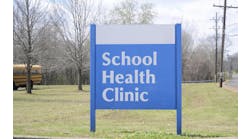When the Centers for Medicare & Medicaid Services (CMS) released the results of the first year of its Next Generation ACO (accountable care organization) model in October, a major takeaway was that both the financial savings and quality scores in year one were strong across the board.
As the CMS data indicated, 11 of 18 Next Gen ACO participants were able to earn shared savings in 2016, while the remaining seven ACOs generated losses outside a minimum loss rate and thus owed Medicare shared losses. However, in sum, the net of all gross savings and losses was about $48.3 million in savings. What’s more, all 18 ACOs in this model scored 100 percent on quality across 33 measures they were graded on.
When CMS announced the Next Gen program early in 2016, the idea was to “build up on experience from the Pioneer ACO model and Medicare Shared Savings Program (Shared Savings Program),” the federal agency said at the time. Indeed, Next Gen model participants have the opportunity to take on higher levels of financial risk—up to 100 percent risk—compared with ACOs in other current initiatives. While they are at greater financial risk, they also have a greater opportunity to share in more of the model’s savings through better care coordination and care management, CMS has stated. The two-sided risk model announced 21 participants (now down to 18 after three dropped out) when it was unveiled last year, most of which have experience in the MSSP or Pioneer model.
Over the last few years, results from different ACO models usually have had one commonality among them: the longer the organization has been in the program, the more likely they are to succeed. To this end, senior leaders at UnityPoint Accountable Care (UAC), a subsidiary of Des Moines, Iowa-based UnityPoint Health and one of the largest ACOs in the nation with a network of more than 7,750 physicians and providers in Iowa, Illinois, Wisconsin and Missouri, point to past experiences in these types of value-based programs as a core reason why the ACO is well-positioned to thrive in the Next Gen model.
Aric Sharp, vice president of UAC, says, “First and foremost, we have had a history of working within these innovative value-based arrangements through the Pioneer [program] and through MSSP Track 1. We wanted to sustain that effort,” he says. “Culturally, within our organization, we wanted to continue to push forward and give a clear vision that we are moving to value. And we wanted to do it in a model that we believed was better structured for our situation to find success.”
Aric Sharp
Sharp says there were several reasons why the Next Gen model was a fit for UAC, including prospective attribution, a recognition of risk score and how that moves over the course of the program, as well as the ability to continue and expand the use of waivers. “All of those were important elements,” he says. “We also wanted to continue to have a seat of the table with CMS in this innovative space. There is a lot of learning that goes on from other participants and from the folks at CMS. And it’s an opportunity to learn from others and share our learning, and continue in the evolution of these models. We appreciate the ability to be a part of that and with our desire to be a national model in this space, we saw Next Gen as the right fit.”
For UAC, success in the Next Gen model came quickly, as the ACO was able to generate $10.5 million in shared savings in the first year, which ranked third out of the 18 ACOs that participated in the program in 2016. UAC was also able to generate an additional $18.2 million in shared savings from other commercial payers in other value-based contracting efforts.
Other Keys to Success
No matter how prepared and how much experience an organization might have, the first year in a brand new ACO program—especially one with two-sided risk—comes with its share of challenges. As Sharp says, “We knew it would be [difficult] and we were comfortable with that because we wanted to challenge the organization to move in this direction in a meaningful way.” He adds, “It took an immense amount of focus to find success. We had to be data-driven. We used the data to reveal to us where the opportunities existed and then we brought discipline and focus around those [opportunities] to execute. That took a willingness on part of the organization to prioritize, but it also took a sustained effort and strong leadership in all of our regions to implement and prioritize as well.”
Of course, having the right IT tools in place will also help a great deal. Betsy McVay, vice president and chief analytics officer at UnityPoint Health, points to a solution that the organization has leveraged that includes both descriptive and retroactive reporting for UAC care managers and which creates a predictive model and a “heat map” that predicts the risk of a patient being readmitted. The solution, McVay explains, actually drills down to the exact day that the patient is predicted to be readmitted within the 30-day window so that UAC providers have a better idea of what the intervention should look like. “A key piece of that overall solution is that it really crosses the continuum. So our care managers use it, and we have used it in the ambulatory settings as well, and also in our post-acute [care] settings. And we have had reductions in [avoidable] readmissions and costs in that space,” she says.
Betsy McVay
Other work around UAC’s broader post-acute care strategy has helped the cause as well, McVay notes. One specific point solution helps clinicians better understand length-of-stay and expected length-of-stay in the post-acute space, while also helping to support decisions about who should be in the network by looking at quality and other metrics. “That has been a key piece of our success, thinking about who is leaving our network and how we can best support our patients in that post-acute area,” she says. The organization has additionally created a clinic “no-show” model that helps providers see the risk of a potential no-show to an appointment so that they better understand the individuals they are working with and what issues they are facing as patients who might need to be better supported, she says.
Indeed, McVay contends that her job is to “enable” by making sure that clinicians have the right amount of insights and data to act on. “I’m here to help create some focus, and to [make sure] that our clinicians, our ACO and our broader network have leveraged every tool that Next Gen or CMS provides us, be it a waiver or something else. It’s all hands on deck to figure out how to best do this,” she says. And what also helps is that on the receiving end, McVay notes that the organization’s clinical leadership “wants to be in an environment where they are focused on the value instead of the per-click.”
From a leadership standpoint, Sharp says that by taking the step towards Next Gen, he knew that a deeper discipline around identifying the opportunities and challenging network leaders to make those opportunities priorities would be required. “When you are at risk, there is something to lose if you don’t keep those priorities in full view. So one of the greatest challenges was internally continuing to push the message of staying on point and maintaining focus to ensure execution and implementation in a consistent and sustained way,” he says. “And we learned a lot as an organization through that. We learned what we could really do when we had such a strong focus and what the impact of that would be. That’s what our approach is as we go into the [second year] of the Next Gen program.”




